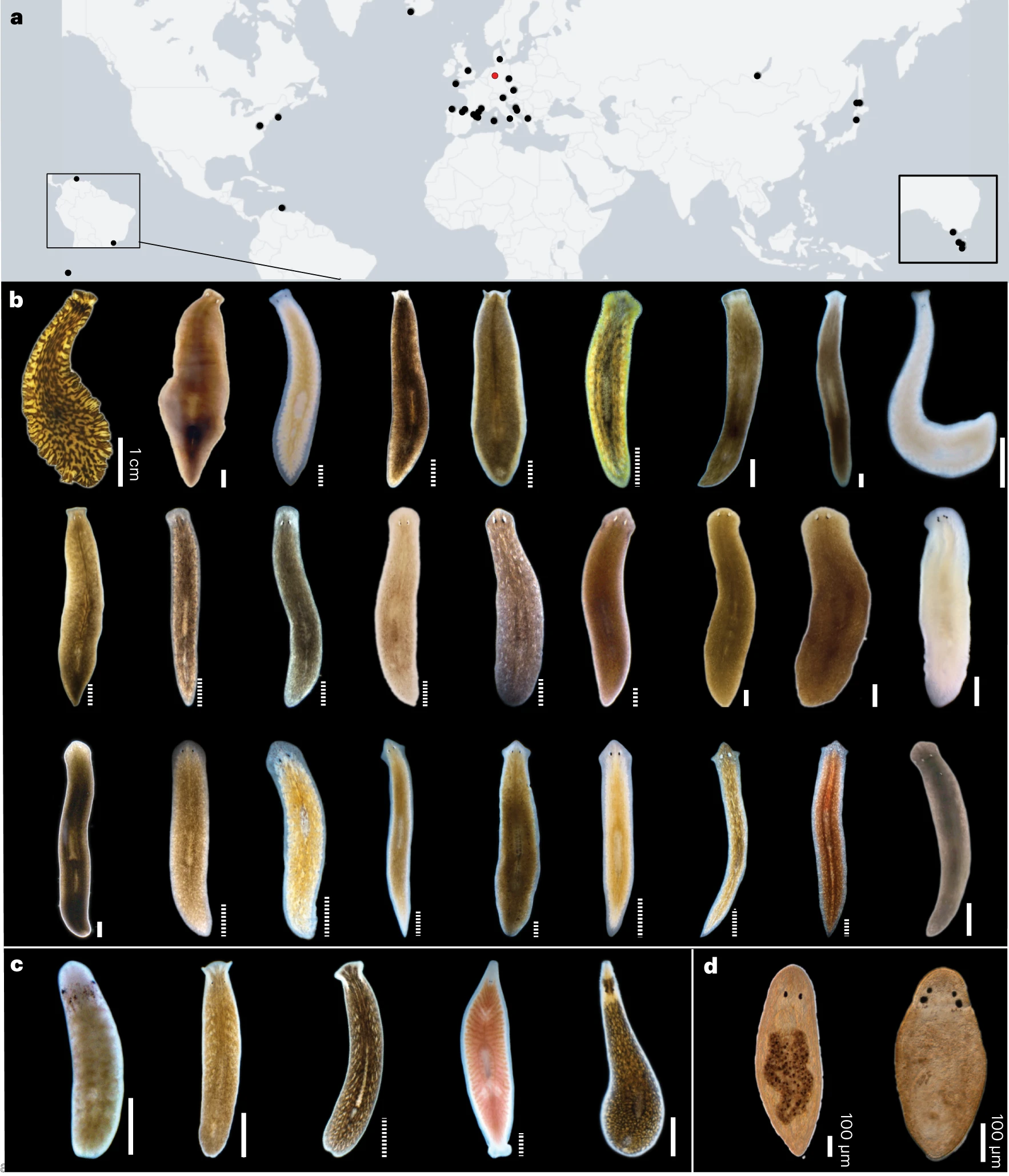Regeneration, the ability of an organism to regrow lost parts, is a fascinating phenomenon. While some animals, like starfish and lizards, can regrow certain body parts, we humans have limited regenerative capabilities. Planarian flatworms are champions of regeneration. They are able to regenerate the entier body from tiny fragments. However, not all planarian species are created equal. Some exhibit robust regenerative abilities where each fragment can regenerate completely - including the head, while others are almost entirely regeneration incompetent. Those species are more similar to Macrostomum, where after cutting the head piece will regenerate a head. While the remaining pieces die.
In our newest study, we used a collection of 40 planarian species to delve deeper into the evolution of head regeneration within this group. Through a combination of quantifying the head-regeneration abilities of each species and constructing a comprehensive transcriptome-based phylogeny, the study revealed multiple independent transitions between strong whole-body regeneration and limited regeneration in freshwater species.

A significant finding of the study was the role of the Wnt signalling pathway in planarian regeneration. By inhibiting canonical Wnt signalling in certain species, we were able to bypass all head-regeneration defects. This suggests that the Wnt pathway plays a pivotal role in the emergence of regeneration defects in planarians. Furthermore, the roles of Wnt signalling in the reproductive system of the model species, Schmidtea mediterranea, raises an intriguing possibility: could there be a trade-off between egg-laying, asexual reproduction by fission/regeneration, and Wnt signalling that influences regenerative trait evolution?
You can read all the details here